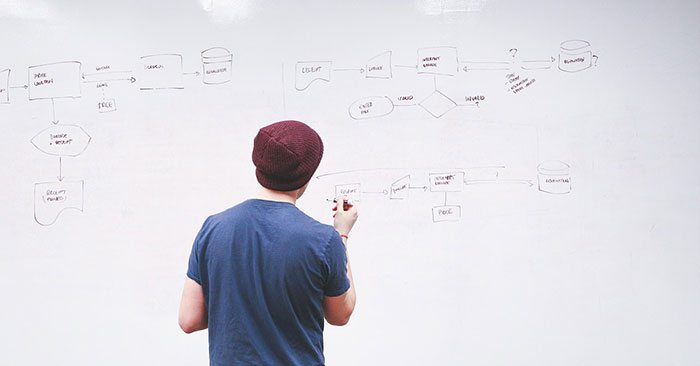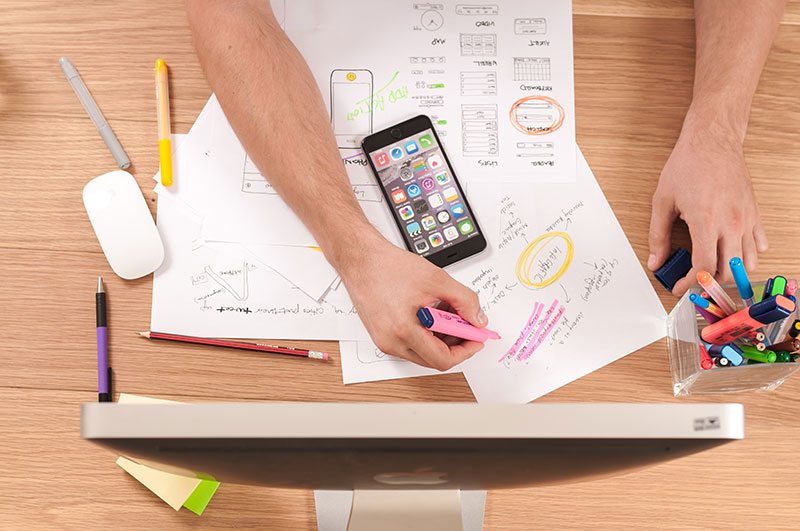6 Tips for Rocking a Whiteboard in Your Next Meeting

A friend once told me a story about his college professor who, no matter what he was explaining, always drew a circle on the classroom’s whiteboard. The topic could be anything from molecular biology to the life cycle of a grasshopper, and, without fail, the professor would eventually amble to the front of the class, pick up a marker, and sketch out a slightly lopsided circle to help demonstrate his point.
One day when the class was nearly finished, the students noticed that something was missing from their class: the circle! The clock was ticking and the professor hadn’t yet produced one. So, in an effort to keep the tradition alive, one student raised her hand and said: “Professor, I’m having trouble understanding. Can you please draw a circle on the board?”
The point? A whiteboard can be a super helpful tool in meetings and group discussions. But, when it’s not used effectively, it can be a distraction (or even a joke).
The next time you find yourself in front of a group with a marker in your hand, consider these go-to whiteboard tips.

Focus on Your Purpose
It only takes one rogue participant to throw a group brainstorm totally off track. As the keeper of the whiteboard, you can help prevent chaos. Start by writing the goal, purpose, or question that needs to be answered on the whiteboard. For example, write “December Newsletter Topics” or “How can we increase sales in Q4?” Staring at the guiding question will help focus even your most tangent-prone colleagues.

Take the Time Write Clearly
This seems like a no-brainer, in an effort to quickly capture every word of a meeting or brainstorm, but many a whiteboard scribe scribbles as fast as they can, leaving an illegible mess.
Slow down and write down only key phrases that represent bigger ideas. The details of these ideas can be later outlined in long-form reports or strategy docs sent to the relevant people. If you’re not comfortable summarizing another person’s point, ask them to summarize their idea in a couple words so you can flesh it out in the meeting overview.

Erase as You Go
At some point in a meeting the group is bound to shift gears, move on, or abandon certain points. If something on the whiteboard is no longer useful to the conversation, erase it. Removing unnecessary visual clutter will help keep the group focused and eliminate distractions. If you’re not sure whether or not to erase something, check in with the group. Ask, “Is it OK if I erase this and make some space?”

Organize Your Brainstorms
Once the conversation gets going, you may discover that thoughts and ideas naturally fall into categories. For example, ideas for increasing sales may be either “online,” “in-store” or “both.” Organizing ideas in columns or sections of the whiteboard can provide a helpful visual aid for the group.

Create a “Parking Lot”
People are bound to bring up ideas, pet projects, and issues that have nothing to do with the topic that’s on the table. Whether you truly want to save that idea for a future discussion, or you simply want to appease the contributor, a whiteboard “parking lot” can be helpful.
Simply square off a section of one of the whiteboard’s corners and jot down any points that fall outside of the meeting’s goals. The idea is to revisit the parking lot thoughts at later, more appropriate time.

Snap a Picture
Nothing’s worse than losing the fruits of a brilliant brainstorm to a well-meaning cleaning crew. Before anyone has a chance to wipe away all of your work, use your phone’s camera to snap a quick photo and email it to all of the attendees.
Follow these basic tips and you’ll be asked to manage the whiteboard at every meeting. If that doesn’t sound particularly appealing, try drawing a circle.
What are you favorite whiteboard tips?
Just get up and start doing it! It’s scary at first but it’s the only way to become a real whiteboarding ninja : )
I love the tip on snapping a picture after the meeting is done! I often use a whiteboard for studying or brainstorming, and that’s one of my go-to ways of saving my work. It’s also a great way to share it with others at the meeting so everyone can refer back to it when they need to!
http://www.vistavisuals.com.au/index.php/products/whiteboards.html
That circle on the whiteboard story just made my day Janessa! I’m still trying to figure out how it was used as a learning tool in itself, but I really want to try it out now. Personally, using those mini whiteboards in elementary school for math drills was one of my favorite memories from those years. This article brings me WAY back. Thanks so much!
Glad you got a kick out of the circle story! Thanks for reading and commenting!